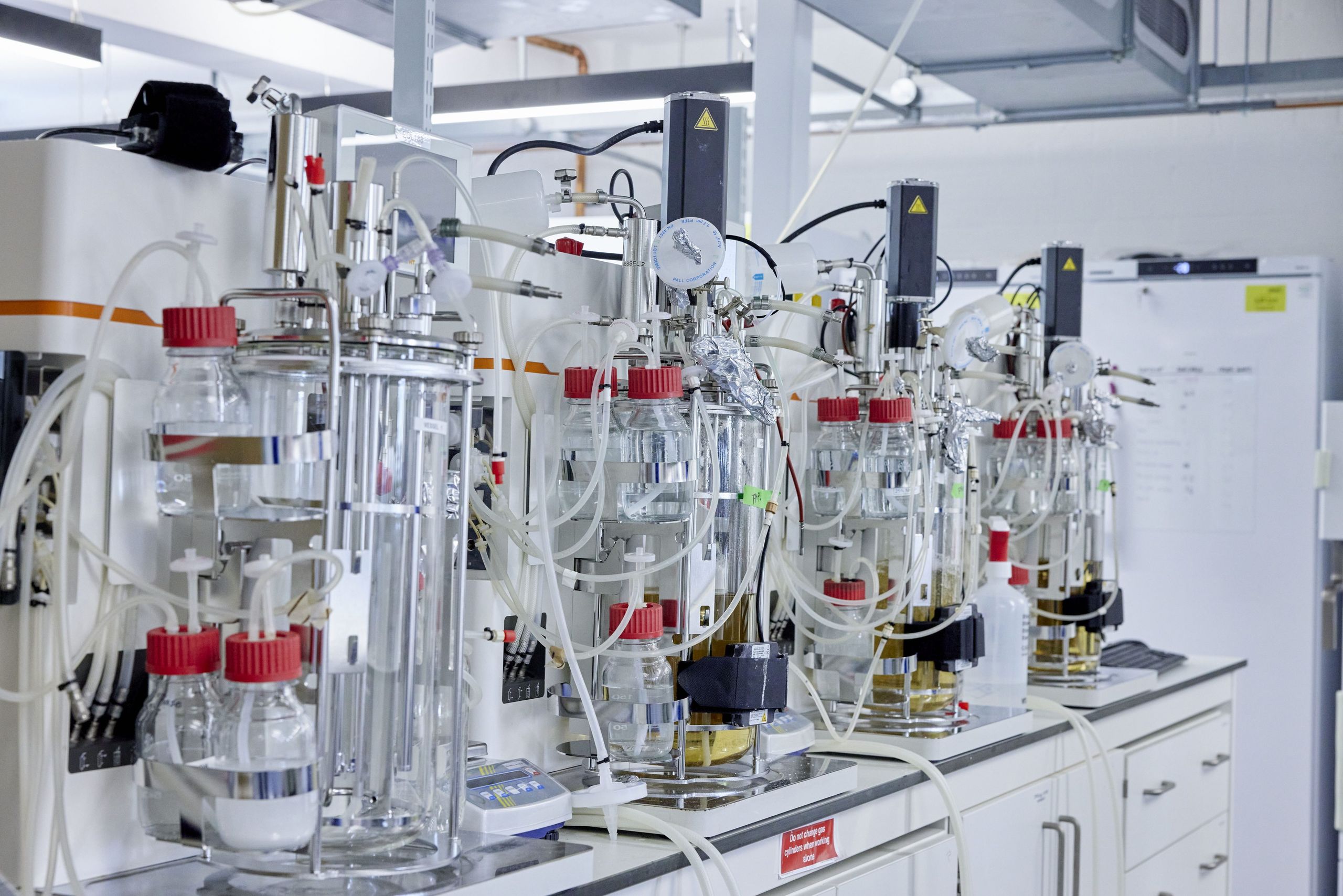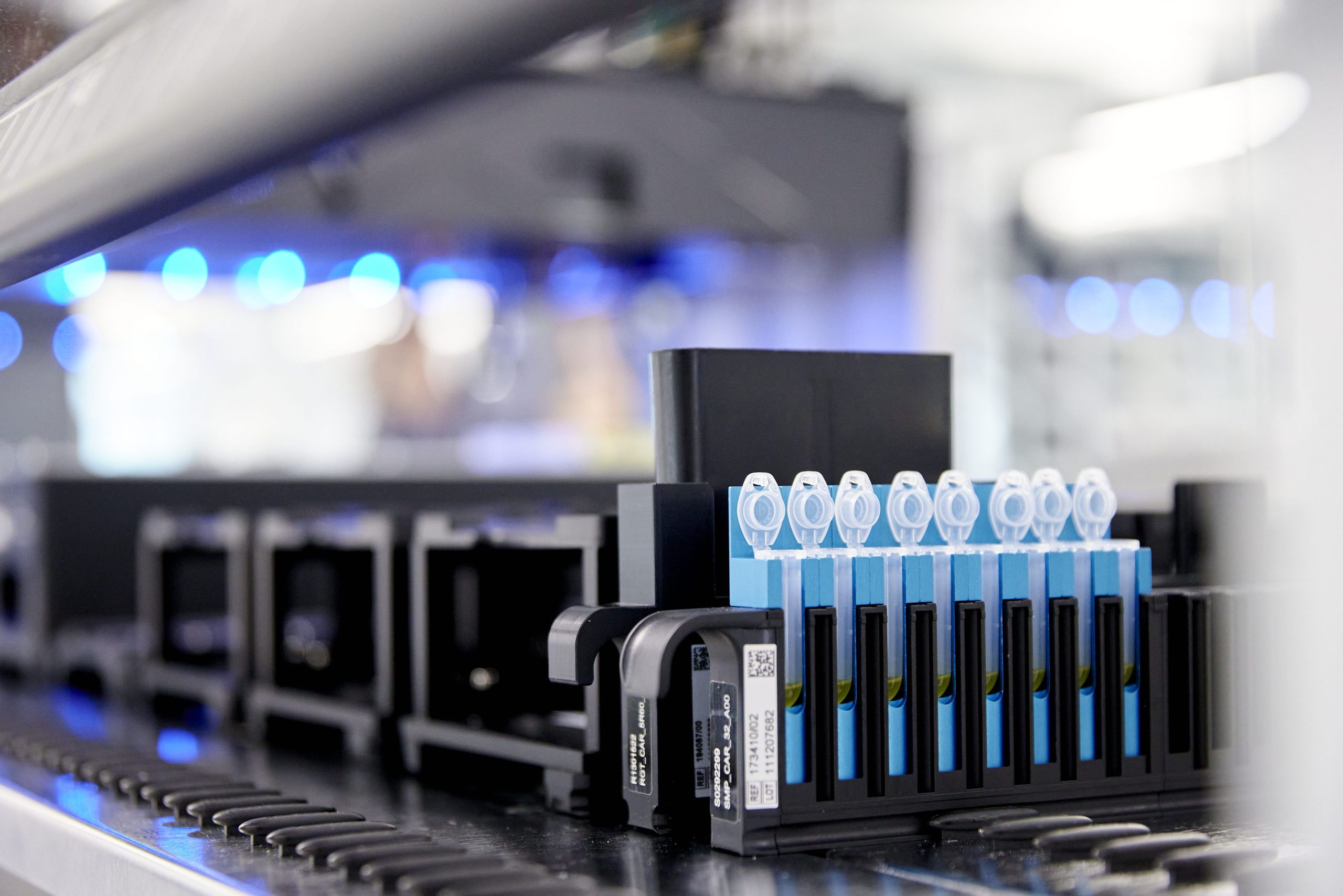Enzymes have evolved for millenia to serve the needs of their host organism. We should not expect these to work readily where their function was not co-evolved with the environment. At FabricNano, we are rapidly evolving enzymes to meet the needs of humanity, which means doing so to perform as cell-free biocatalysts in the most demanding of industrial operational conditions. To enable a bio-based future, we need to rapidly accelerate the most scalable, efficient, and low Capex infrastructure solution to bio-based chemical production – and that is cell-free biocatalysis.
Evolving Enzymes: The FabricNano Technology Stack

Protein-based biocatalysts have had limited application in the past. This is how those limitations can be overcome.
Evolution and Enzymes
Enzymes, the essential machinery for bio-based chemistry, have evolved within cells, making them unsuitable for effective use outside those environments. To advance bio-based chemical production, FabricNano is designing enzymes that perform optimally as cell-free biocatalysts outside of their cell structures – in effect removing the biomachinery from its natural state and optimizing its function.
Challenges in Enzyme Utilization
Shifting enzymes into new environments often results in poor reaction kinetics, denaturation, or limited functionality. Which means that many enzymes are not prepared for commercial use due to their inability to perform under required industrial conditions. This is especially frustrating when working with multi-enzyme cascades that have multiple non-overlapping functionality optima. The fact remains that today you cannot pick one of a thousand enzymes, protein engineer it heavily, and then expect that enzyme to deliver sustainable and economically viable chemical production.
Limitations of Protein Engineering
To solve this lack of enzyme readiness for industrial conditions, the industry has converged on protein engineering. While protein engineering attempts (and occasionally succeeds) to enhance enzyme performance in cell-free environments, it’s not a comprehensive solution. Current methods still lack the ability to predict edits to the enzyme accurately as evidenced by approaches like directed evolution. Our understanding of the structure-function relationship is incomplete.

Enzyme Size and Immobilization
Even with robust enzymes, their small size makes them challenging to retain and use over long durations in industrial reactors. Immobilization techniques, which retain enzymes in reactors and simultaneously stabilize enzymes to broad industrial conditions, have shown surprising promise. But a holistic approach is required to address the broader challenges of enzyme utilization in cell-free environments. There’s clearly a solution to making immobilized enzyme biocatalysts, but the industry has entirely understudied using any sort of high-throughput and learnable experimentation for enzyme immobilization and cell-free biocatalyst design.
FabricNano's Approach
A combination of three novel methods, below. These components work together to accelerate the learning process and produce highly performant enzyme sequence IP:
Immobilization Engineering™
Cell-free Evolution™
Interaction Engineering™
Immobilization Engineering™ is a method involving high-throughput experimentation of both enzyme immobilization and protein engineering. These approaches are used jointly and simultaneously along with Design of Experiments (DoE).
Cell-free Evolution™ challenges enzymes in various harsh industrial environments to uncover key insights for longevity and improved performance with respect to changing cell-free environments.
Interaction Engineering™ allows any heterogenous (i.e. insoluble) biocatalyst design to translate to an optimal homogenous (i.e. soluble) biocatalyst design. This is a confidential method.
Business model
In commercialization, FabricNano will either produce the optimal cell-free biocatalyst and/or license the enzyme sequence IP that results from Immobilization Engineering™, Cell-free Evolution™, and Interaction Engineering™ to clients already using enzymes in their processes and/or products. The licensing approach allows clients to benefit from FabricNano’s platform when the enzymes have already been developed but still struggle to perform in cell-free environments because they were never evolved for performance as cell-free biocatalysts.
FabricNano’s Unique Position
No company has yet tried to properly evolve enzymes for use in cell-free environments. FabricNano has built a systematic platform and set of methods to uncover the design principles for cell-free enzyme-based biocatalysts.
Despite the predominant focus on ‘protein engineering’ in industrial biotech, we’re still grappling with designing cell-free biocatalysts that stand up to the demands of real-world applications. This gap has hindered the realization of scalable and widely applicable green chemistry solutions.
At FabricNano, we’re leading the charge in reshaping cell-free biotechnology by reimagining the traditional approach – and prioritizing enzyme immobilization over protein engineering.
Through comprehensive high-throughput experimentation involving joint study of enzyme immobilization, protein engineering, and the crucible of evolutionary pressure, we’re pioneering an entirely new understanding for how to design cell-free enzyme biocatalysts. FabricNano technology propels enzymes to perform beyond their natural boundaries, harnessing their potential as cell-free biocatalysts.












